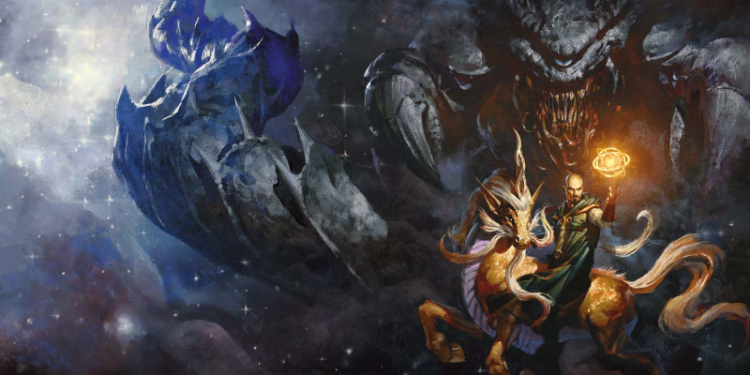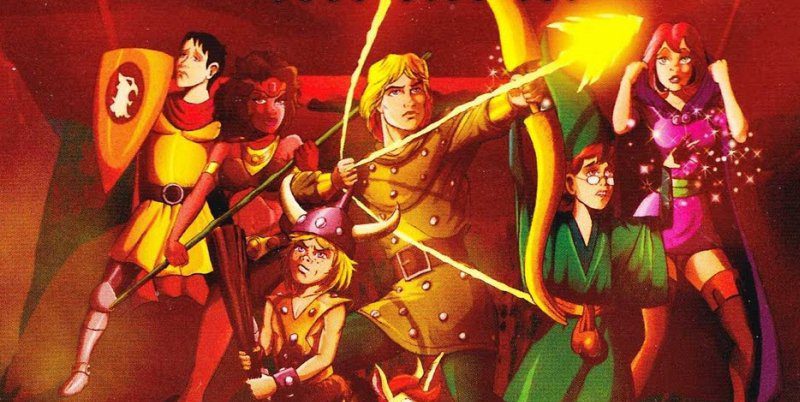
In this, the fifth and probably final article on Mordenkainen Presents: Monsters of the Multiverse, I’m digging into the individual stat blocks of some named monsters. Last time out, which was a few more months ago than any of us would have liked, I went through the stat blocks starting with A to identify major trends in monster redesign. The originals of these stat blocks are in Mordenkainen’s Tome of Foes.
Part One: Aarakocra – Genasi | Part Two: Githyanki — Satyr | Part Three: Sea Elf — Yuan-ti | Bestiary | Sample Legendaries
Kicking Ass and Taking Names
For named monsters, then, we’re mostly looking at climactic encounters. There are more legendary actions than normal, and we can take it as read that there can’t be more than one of that creature in the fight… or, for the most part, in the campaign. Expect some commentary on boss fight design along the way, because they’ll appear as a boss fight more often than not.
Bael: I dunno, I’ll come out swinging and say that I think doubling Bael’s hit points is a good start, now that we know just how crazy damage output gets by the midgame. (Bael’s hit points are unchanged, at 189.) He lost 1d8 necrotic damage on his Hellish Morningstar, but its damage otherwise changed to force. As we discussed before, “force damage” lets them cut the Magic Weapons trait, and… it’s just not a great idea, because it’s abandoning the narrative of damage types and obliterating the barbarian advantage on survivability in the late game. Bael also lost animate dead, inflict wounds (upcast to 8th level), counterspell, and symbol, but can cast any of his spells with his Legendary Actions, rather than just charm person or major image.
Baphomet: The demon lord of minotaurs, the Horned King, picked up 44 hit points. Heartcleaver deals force damage now, but Bite and Gore don’t, so they’re kind of useless against creatures that are immune to nonmagical damage the way Baphomet himself is. This is part of the glaring problem with getting rid of Magic Weapons. This change affects PCs relatively little, but it matters for interactions with other creatures. The more D&D moves toward “PCs and monsters are fully asymmetrical,” the more the DM has to just make it up when emergent play emerges and NPCs wind up fighting each other.
Baphomet lost a few spells – detect magic and hunter’s mark, and his Charge trait is reorganized to appear as part of the Gore attack. Since Charge only applied to Gore, that seems like a solid usability change to me.
Demogorgon: Hey, 60 more hit points! Maybe not a huge difference at CR 26, but it’s something. The gaze attack that was previously “pick one” is now “roll or pick one,” which suits Demogorgon’s chaos. Insanity Gaze was renamed to Hypnotic Gaze, to be less insensitive around mental health. Overall, Demogorgon remains kinda scary, but nowhere near as scary as his rep.
Fraz-Urb’luu: Unlike many other creatures in this book, F-U’s fists and teeth now deal force damage – he doesn’t have a weapon to switch over to force. I’m honestly lost as to why the Prince of Deception is a fists-and-teeth brawler with a splash of psychic damage and the frightened condition as his only ranged attack. His spells have range, of course, but I find illusions especially hard to use as a DM. That’s the kind of thing I need to spend a good hour brainstorming in advance of the fight, with contingencies – exactly the kind of thing this stat block change is trying to solve! (The lair actions help F-U significantly.)
Geryon: Geryon’s changes are few – banishment replaces divine word and symbol (likely because divine word is so unlikely to accomplish anything against PCs during the span of three rounds… but man is it great for wrecking a crowd of people when Geryon gets summoned). His stinger is force + poison and his claw is cold damage. In case I haven’t mentioned this, Claw replaces Claws, and Multiattack refers to “Claw” rather than “claws.” The grapple carrier effect from his Claw is still pretty nasty.
Graz’zt: I wouldn’t care one tiny bit about Graz’zt if he weren’t the first really big cosmic enemy in Sepulchrave’s Tales of Wyre. 3.x’s Book of Vile Darkness didn’t sell him to me the right way at all. Anyway, his spellcasting got changed a bit to cut crown of badness and replace counterspell with a new Negate Spell (recharge 5-6) reaction. A few other low-priority spells got cut too – they don’t want you to waste your time on spells that aren’t a good use of G-dawg’s time. His greatsword, Wave of Sorrow, switches to force damage and picks up d6 of acid damage. The Sow Discord and Teleport legendary actions have been folded into Abyssal Magic, allowing him to cast any of his spells or use his Teleport action.
Hutijin: Poor Hootie Jim. He desperately needed to pick up more hit points – 200 is not a credible number for CR 21 creatures. Some of the same kinds of changes got made to his spellcasting as we’ve seen before: animate dead is gone, because that’s much more encounter-building than functional (also… CR 21 devils don’t need some zombies). Overall, though, this guy is described as a heavy hitter, and has little hope of out-damaging even one party member, much less the whole team. Pump the brakes there, Big Hooter.
Conclusion
You know, I think I’m going to call it there. The rest of the named demon lords and archdevils keep to the trend-line established already. Everything we know about boss fights in 5e says that unless your PCs are way down at the bottom of tier 3, they’re going to eat the lunch of any of these dudes in a one-vs-many fight. (The funny part is that you can block some of them off from using their full legendary actions by trying to fight it with just two PCs.) The point is, bring mooks. Bring a bunch of them. And make sure the mooks are screening for the boss as much as possible.
I think I came to this book expecting some visible increase in staying power, mainly for legendary types. That’s not in evidence here – a small number of named creatures gained 40-60 hp, there are some very modest improvements to damage in some stat blocks, and some legendary actions broadened their spellcasting options, but overall they’re designing to the same target.
My take on the book as a whole: the only bad problem is the Magic Weapons/force damage change. It has too many downstream effects and aesthetic costs for what it sets out to solve. Other than that, it’s a good solid book for the users that find this style of spellcaster preferable to the earlier long-spell-list caster. If you’re not that kind of DM – if you agree that it’s better characterization if NPC spellcasters work mostly like PC spellcasters – then the book probably isn’t for you and you should stick with your old copies of VGTM and MTOF.



